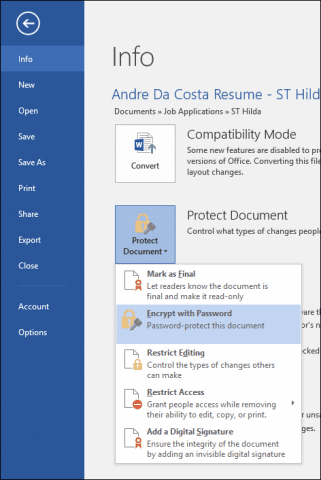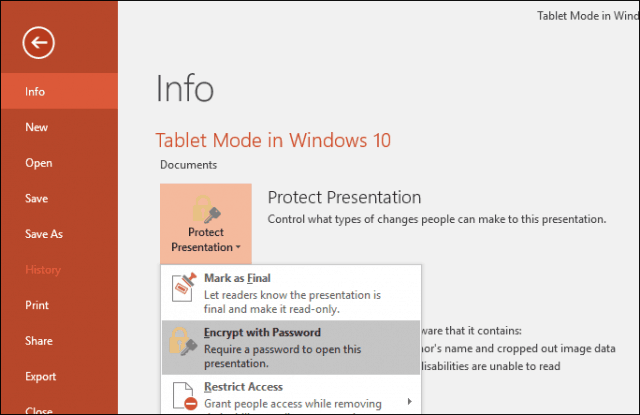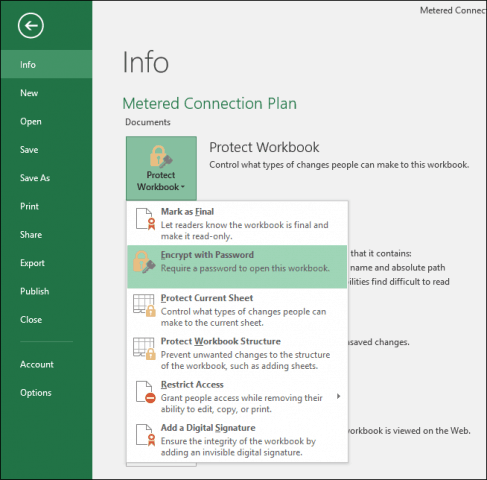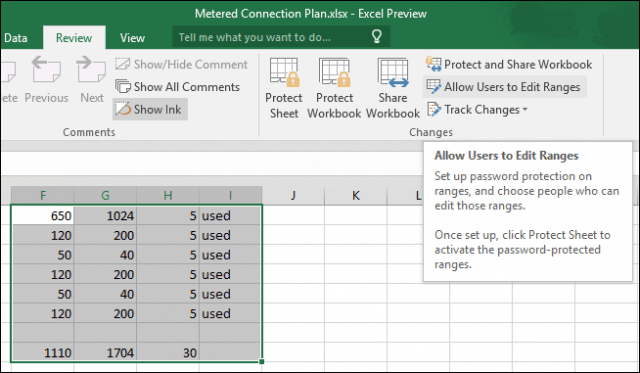How To Password Protect and Encrypt Office 2016 Documents

If you use Microsoft Office 2016 products such as Word, Excel, and PowerPoint to prepare sensitive information; did you know Office has a built-in encryption feature? Let’s review the details and how to protect your documents.
If you use Microsoft Office products such as Word 2016, Excel 2016 and PowerPoint 2016 to prepare sensitive information; did you know it’s simple to add a layer of encryption to your documents, spreadsheets, and presentations? The feature is built right into the Microsoft Office suite, and it’s quick and easy to use, as I’ll show you below. For those of you who’ve not yet made the investment into the latest Office suite, we’ve covered this information for previous versions of Office so feel free to check out our previous article for those instructions.
When password protecting your documents keep in mind some essential tips:
- Create a strong passphrase or password when protecting your documents. A passphrase is nice as it hopefully will prevent you from forgetting your password.
- Use a unique password, don’t use the same password you use to sign into your Windows PC or another service. This is important just in case your user account is compromised, your files have at least a hope of protection.
- If you’re going to encrypt a lot of office documents, consider using a password manager. Our favorite here at groovyPost is 1Password.
- By default, Office 2016 / O365 uses AES 256 bit encryption which for 99% of us out there is good enough. If you’re looking to change the default in any way, I encourage you to check out this TechNet article which reviews the cryptography options in detail.
Protect Office 365 or Office 2016 Files Using Encrypt with Password
The procedure is standard for most Office applications, so for this article, we will use Microsoft Word 2016 to start. First, open the Office document you would like to protect. Click the File menu, select the Info tab, then select the Protect Document button. Click Encrypt with Password.


Enter your password then click OK.


Enter the password again to confirm it and click OK.


Microsoft Word will now indicate the document is protected. Each time you open the document, you will be prompted to enter your password to access its contents.


Protecting a PowerPoint presentation works the same way.


Password protecting other types of Microsoft Office files
When working with other types of Microsoft Office files such as a Microsoft Access database, there are some minor requirements. Access 2016 requires opening the database exclusively first before you can password protect it. To do so, click File > Open, select your Database file then click the arrow beside the Open button then click Open Exclusive.


Enter and confirm your password then click OK.


Protect all or part of an Excel workbook
For Microsoft Excel Workbooks, you can protect all or parts of a workbook. To do that, use the following instructions. Click File, select the Info tab, click the Protect Workbook button. Click Encrypt with Password then follow the same instructions used when protecting a Word document.


Protect a sheet
If you have a shared workbook, you can protect a particular sheet without locking the entire workbook. Right-click the sheet then click Protect Sheet.


If there is part of a sheet you would like to protect from modification, you can do so too. First, highlight the range then click the Review tab. Click Allow Users to Edit Ranges


Click Protect Sheet.


Enter a password then confirm it.


When you try to make changes to that range, you will receive the following message:


To make changes to the range or a particular cell, select it, go to the Review tab then click Unprotect. Enter your password then click OK


That’s it, and your Microsoft Office files are now for your eyes only. Check out our other articles such as enabling BitLocker Drive Encryption and encrypting portable drives using BitLocker to Go for added security.
Leave a Reply
Leave a Reply






